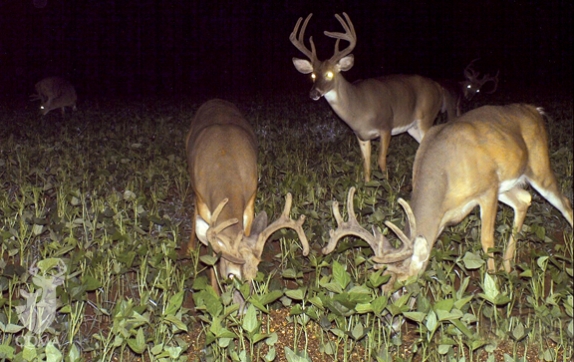yoderjac
5 year old buck +
Has anyone seen any radio collar research on how these relate?
In general, radio collar work with bucks show home ranges vary with habitat but 1,000 acres is a good average proxy. There are excursions from these home ranges that can be quite far from time to time. Of course during the rut bucks can travel quite far in search of hot does. That said, there are generally core home ranges where a buck spends most of his time.
During the summer, we often see bachelor groups of bucks, generally, but not always, in the same age classes.
I realize this may have little value to folks with small properties, but here is the question. When we see a bachelor group in the summer with say 5-10 bucks in it. Does that mean that the home range of those bucks overlap in that location? How much to those home ranges vary?
I've seen radio collar studies where some individual bucks were tracked. Has anyone seen a study where a high number of bucks in an area were radio collared and tracked to look at how they relate to one another throughout the year? This may be different with region.
If you haven't seen any research, what are your general thoughts on this subject?
Thanks,
Jack
In general, radio collar work with bucks show home ranges vary with habitat but 1,000 acres is a good average proxy. There are excursions from these home ranges that can be quite far from time to time. Of course during the rut bucks can travel quite far in search of hot does. That said, there are generally core home ranges where a buck spends most of his time.
During the summer, we often see bachelor groups of bucks, generally, but not always, in the same age classes.
I realize this may have little value to folks with small properties, but here is the question. When we see a bachelor group in the summer with say 5-10 bucks in it. Does that mean that the home range of those bucks overlap in that location? How much to those home ranges vary?
I've seen radio collar studies where some individual bucks were tracked. Has anyone seen a study where a high number of bucks in an area were radio collared and tracked to look at how they relate to one another throughout the year? This may be different with region.
If you haven't seen any research, what are your general thoughts on this subject?
Thanks,
Jack

